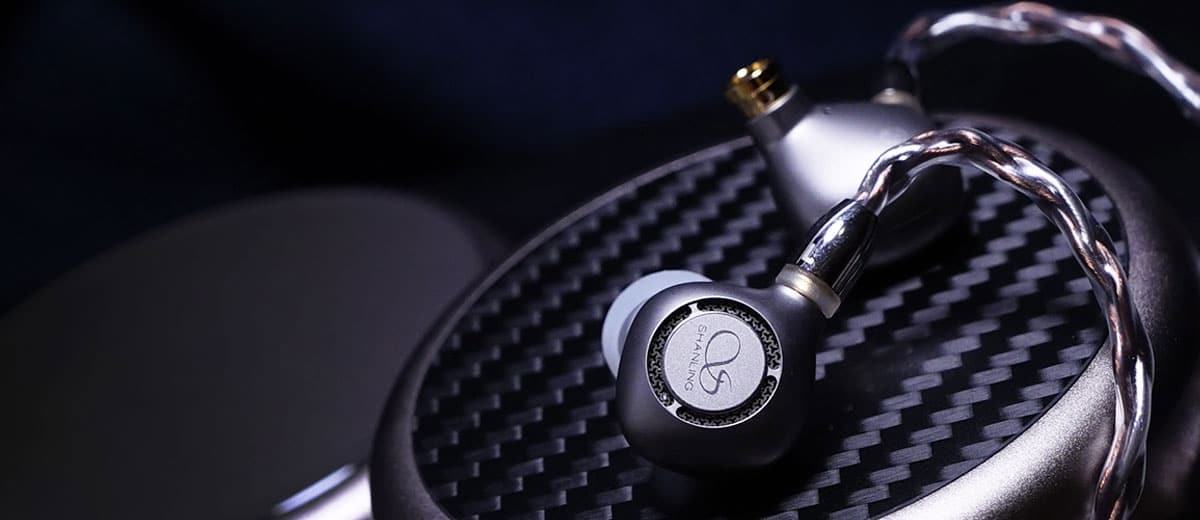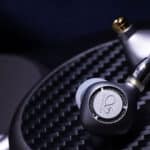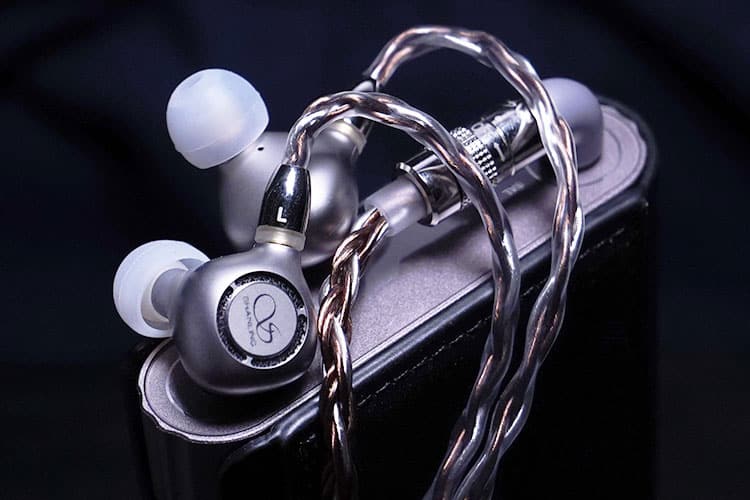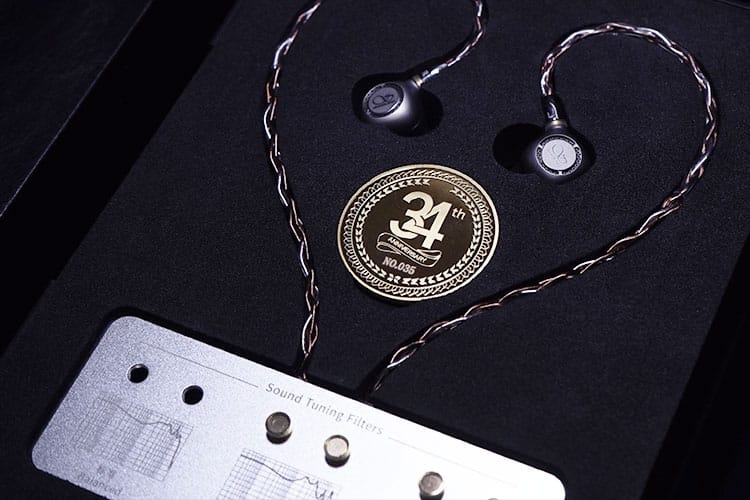Today, we review the Shanling MG800 which is a flagship 11mm single dynamic driver IEM with a semi-open acoustic design and adjustable tuning. It is priced at $899.
Disclaimer: This is a sample sent to us in exchange for our honest opinion. Headfonics is an independent website with no affiliate links or status. We thank Shanling for this opportunity.
To find out more about Shanling products we have previously covered on Headfonics click here.
Note, that this article follows our latest scoring guidelines which you can read up on here.
The new Shanling MG800, sees the company take their in-ear monitor semi-open design first seen in the MG600 and elevate it to the flagship level by making it their most advanced IEM to date.
They have also packed in some unique implementations and premium components to enhance the sound quality of the MG600. The aesthetics and sound performance on this open-back unit are stunning, let’s not wait to walk through the features!
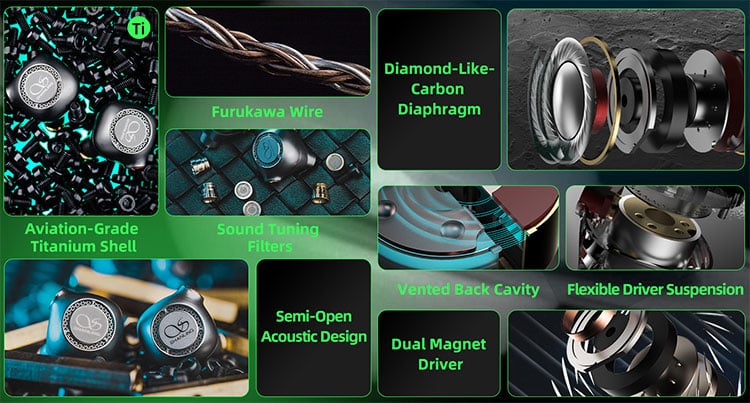
Tech Highlights
Housing
The first thing you will notice on the MG800 is its extremely light (6.6g) and tough housing, carved out by CNC machining from aviation-grade Titanium blocks, then undergoes oxidization treatment that makes the surface even more resistant to scratch and corrosion.
Driver
Inside the highly compact chassis, Shanling puts in their new 11mm driver design with Diamond-Like-Carbon (DLC) plating also with a Carbon Diaphragm layer.
The driver incorporates strong N48 Neodymium Magnets and a CCAW (copper-clad aluminum Wire) coil using Daikoku 0.035mm wires. This rigid membrane and higher magneticity enhance responsiveness to power for stronger extension in the two ends of the spectrum plus boosting the dynamics.
Acoustic Chamber
Shanling also put in a lot of work on the acoustic chamber, where the rear cavity design enables the diaphragm to move freely without being hindered by the pressure developed.
The driver also adopts a special suspension system that is designed to eliminate all unwanted vibration between the driver and the shell, enhancing efficiency and clarity.
Filter System
The MG800 also features an interchangeable filter system with three presets “Balance”, “Warm” and “Clear” on the 3 Brass nozzles parts, tuned to drastically change the response and sound like 3 different models.
Different patterns can be observed on the grills of the nozzles and the FR diagrams inscribed on the nozzle holder we can see the very different responses after applying these filters.
Design
Since around the 1950s titanium has been commercially used for the production of high-end products and it has been a premium material ever since, but only until recently, audio manufacturers start to use them on portable DAPs and earphone chassis. Probably because it is extremely hard and expensive to tool a piece of Titanium.
The same design used by Shanling on the MG600 using stabilized wood was unquestionably a charm to look at. However, the MG800 has taken it further with its lustrous finishing.
On the centerpiece, Shanling’s logo is engraved and around that, an area exposes the circular filtering layer for pressure regulation, which has a pattern similar to brake pads on race cars.
Comfort & Isolation
The MG800 is incredibly light on the hand even when the construction feels extremely solid and bold. With its rather small size and extended nozzle, it could fit instantly on any ear without the need to adjust from time to time.
The feather-light housing also works well for long listening sessions. The supplied cable is a bit thick but it wraps well around the back of the ear without developing much pressure over time.
Because this is a semi-open design, the isolation is slightly weaker than common closed-back IEMs. There is still a fair degree of passive noise cancellation but it may not be ideal for listening on a train or in a noisy area.
However, the design brought about certain merits like enhanced openness and allowing the ambiance to blend with the music.
Tips
The MG800 comes with a huge selection of tips with different bore sizes. We have seen these on some other Shanling items and as usual, the tips include the following three sets: bass-optimized, balanced, enhanced staging performances. I will be using the balanced tips for tests which sounds more natural to my ears.
For those who want deeper insertion, there is a pack of SpinFit CP100 ear tips provided as well and to me it is pushing the treble sharper and slimming down the mid-bass.
Stock Cable
The MG800 is paired with an Octa-core cable with Furukawa Japan cores inside, including 2 x Silver-plated Copper (SPC) cores and 6 x single-crystal Copper cores. The cores are then wrapped into a coaxial double-layer formation and shielded independently for enhanced EMF blockage.
The cable is terminated with MMCX on one end and a hot swap system on the other hand that allows instant switching between 2.5 / 3.5 / 4.4mm plugs. The metallic joints are sturdy and there are no signs of them loosening up after dozens of attempts to unplug and reconnect.
Packaging & Accessories
The MG800 packaging was not what I initially had expected. It has a playful illustration on top and tons to discover inside. It feels more like a fan service item with a medallion to celebrate Shanling’s 34th Anniversary.
Down in the box, you will find not only a huge metallic plate to store the filters, inscribed with the FR using different filters on the MG800.
Digging deeper there is a huge metallic carrying case with a glossy glass insert on top, this matches the design language of Shanling’s players and MG800’s gunmetal color, completing the package perfectly.
Sound Impressions
Summary
The MG800 is supplied with 3 different Brass tuning filters and they are very capable of delivering a staggeringly different set of signatures to match different genres or tonality preferences.
The semi-open back design allows a lot of air to be delivered by the driver and the rigid membrane material enhances the response speed to deliver the bass accurately and deeply without blurring over on the midrange.
With all filters, the MG800 displays good balance in tonality, decent mid-bass density and dynamics also clarity in the upper mids.
Transparency and control are excellent on this set and the vocal is well-rounded to be free from harshness, though if you want it to be more exciting, the overtone area can be brightened by using the “Clear” filter that is at the same time pressing down the midrange for more swiftness.
The “Warm filter” offers a thicker, lusher response that lifts the clarity in the upper mids and treble at the same time.
The “Balanced” filter has the evenest energy distribution among the three and has an earlier roll-off that makes it sound sweeter, and it is used for the below impressions mainly after more than 2 weeks of burn-in.
Bass
The bass on the MG800 is full-bodied, punchy, and spacious on the “Balanced” filter. There is a lot of air driven by the large diaphragm and despite having great fullness in the low end, the driver attacks speedily with a rather clean decay that strengthens the transient performance in the mid-lows as well as enhances the resolution.
Lower strings on bass and guitars are particularly prominent and wet, with great fullness and air captured.
When switching to the “Warm” filter the bass guitar is imaged bigger and fuller, radiating with a strong and denser body while good clarity in the upper frequencies is maintained. The “Warm” filter also allows the bass to fill up the space which is great for club music and synthesized music.
While some filters may sound clearer the others, all of them display excellent response speed and layering. When feeding the MG800 with enough power, the mid-bass area in particular can sound very dense and powerful with plenty of air, which makes pops and EDM very rhythmic.
Mids
The midrange on MG800 is surprisingly airy, firm, and lush despite its semi-open design. With the “Warm” and “Balanced” filters on, the core vocal frequencies and acoustic guitar attack with good intensity and are powerfully delivered while maintaining quite a natural tone.
By using solid Titanium as housing material, Shanling seems to have taken away the slight boxiness with the softer material on the MG600 and allows much more detail in the midrange to be heard.
Although there is still plenty of energy around 500Hz, the MG800 can sound defined and speedy and is compensated by a small boost before the sibilance zone that helps outline the vocal clearer.
The impactful and elevated mid-lows tend to bring darker voices further forward and sound a bit denser, while lighter voices are well-polished and prominent on all filters and are swiftly delivered.
The tuning works well with different voices to sound stereophonic and it is fun to roll filters and boost the presence of different voices and instruments.
Treble
The hi-mids on MG800 are not shy yet it is well-rounded to free harshness from the mix while not killing the air and pressing down overtones.
Testing with EDMs and chamber music, on the “Balanced” filter the MG800 sounds fairly extended and airy, but you may want a bit more aggressiveness that can be added by using the “Clear” filter.
The “Clear” filter boosts the upper register for clarity and has much more energy in the top end which makes flutes and brass instruments more exciting and unlocks some airy details that could be missed on the “Balanced” or “Warm” filter.
The staging boundaries are also pushed further which is great for live shows that sound hotter in the treble but more authentic to the actual spacious experience.
Overall, the treble has the right amount of intensity and presence, and the design gives it a higher level of versatility as the filters can be switched to make the treble tamer or more aggressive.
The filtering system is a great implementation on the MG800 that does not block off the lows or highs but cares about the balance and the subtleties in the highest and lowest registers.
Staging
With a semi-open design, the MG800 can pull off an effortless and expansive soundstage that is rich in treble detail, especially with filters that push the presence of frequencies beyond 10kHz.
While the bass radiates powerfully with a substantial amount of punch, the driver responds speedily such that the image holds together densely with great definition and clarity, vocals also sound spaced and very airy with the breathy tones well smoothened.
The sound aligns very well with the look of the IEM and again there is a lot of fun tweaking with filters, while all 3 filters sound very airy due to the open-back design, the “Clear” filter stands out to deliver the highest penetration power and openness.
The “Warm” filter feels more confined and every element is closer in the headroom rendered, the vocal also sounds more intimate and intense.
On a side note, when switching to single-ended output, the midrange sounds even denser, smoother, and more dynamic, compared to balanced output that is more expansive and stronger marginally in resolution.
Click on page 2 below for pairings and our select comparisons




